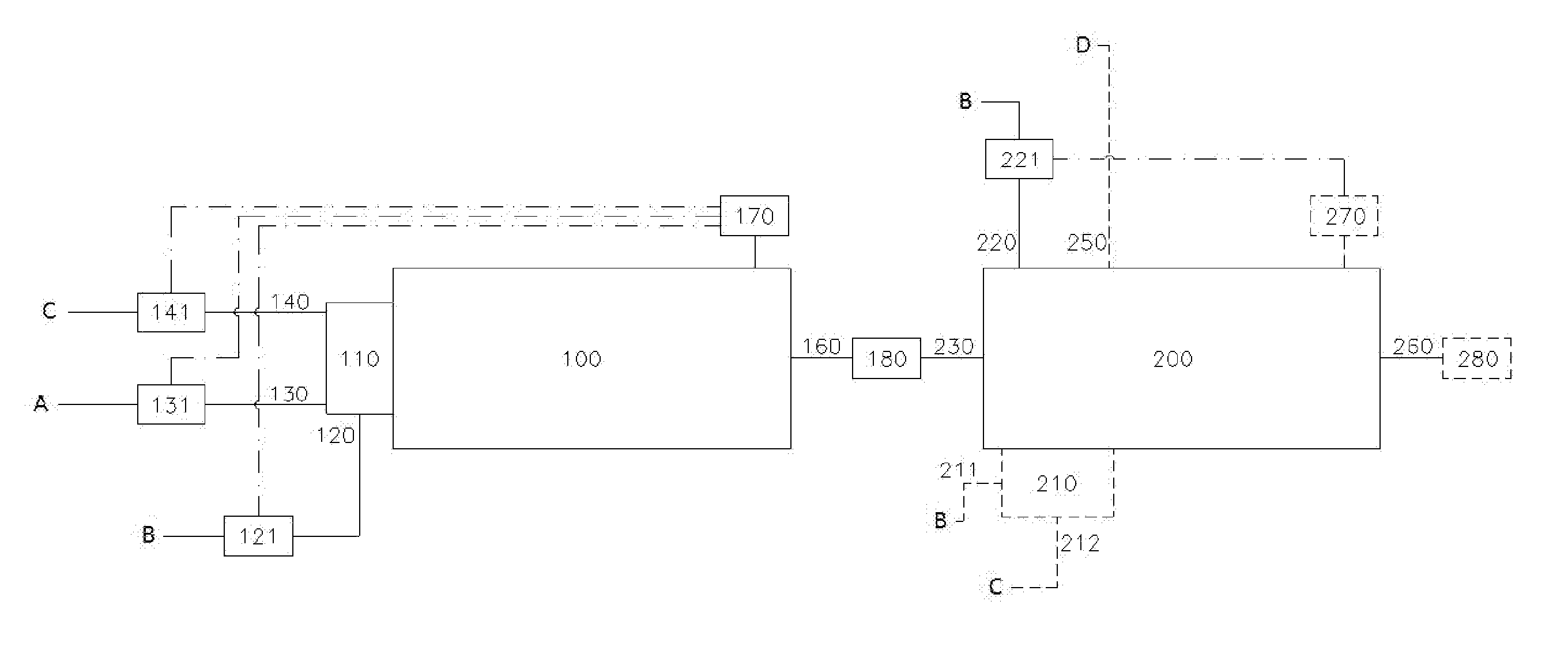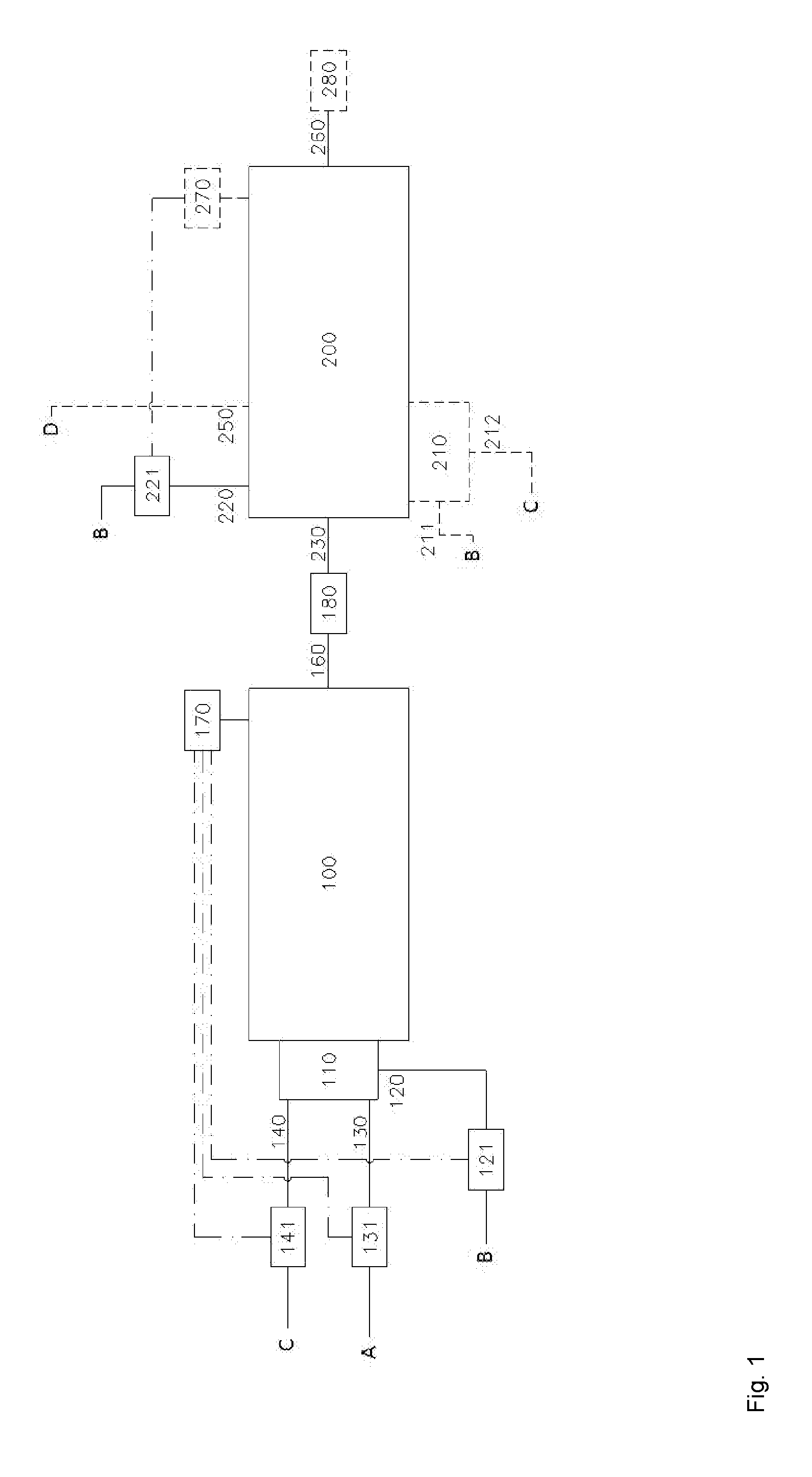Process for incinerating nh3 and a nh3 incinerator
a technology of incinerator and incinerator, which is applied in the direction of combustion process, inorganic chemistry, lighting and heating apparatus, etc., can solve the problems of increasing operational and investment costs, claus furnaces are not always available, and typical claus furnaces are rather complex
- Summary
- Abstract
- Description
- Claims
- Application Information
AI Technical Summary
Benefits of technology
Problems solved by technology
Method used
Image
Examples
examples
[0036]The following example is included for illustrative purposes only.
[0037]A NH3 stream at a rate of 1.95 Nm3 / hr was introduced together with a C3H8 stream at a rate of 0.034 Nm3 / hr into reaction zone 100 of an NH3 incinerator. Also introduced was a sub-stoichiometric amount of a first oxygen / containing stream at a rate of 6.9 Nm3 / hr. A first incineration step took place at a temperature of approx 1000° C., and at ambient pressure. The first product stream was reacted with a second oxygen / containing stream. The second oxygen-containing stream was supplied at an amount greater than stoichiometric with the result that the oxygen content measured at the end of the reaction zone was 3 vol % (measured in dry flu gas). The second incineration step took place at a temperature of 840° C. and at ambient pressure.
[0038]Without analyser and thus without adjusting the oxygen feed ratio in the first incineration step a second product stream was obtained having an NO content varying between 0 a...
PUM
| Property | Measurement | Unit |
|---|---|---|
| Temperature | aaaaa | aaaaa |
| Fraction | aaaaa | aaaaa |
| Fraction | aaaaa | aaaaa |
Abstract
Description
Claims
Application Information
 Login to View More
Login to View More - R&D
- Intellectual Property
- Life Sciences
- Materials
- Tech Scout
- Unparalleled Data Quality
- Higher Quality Content
- 60% Fewer Hallucinations
Browse by: Latest US Patents, China's latest patents, Technical Efficacy Thesaurus, Application Domain, Technology Topic, Popular Technical Reports.
© 2025 PatSnap. All rights reserved.Legal|Privacy policy|Modern Slavery Act Transparency Statement|Sitemap|About US| Contact US: help@patsnap.com


